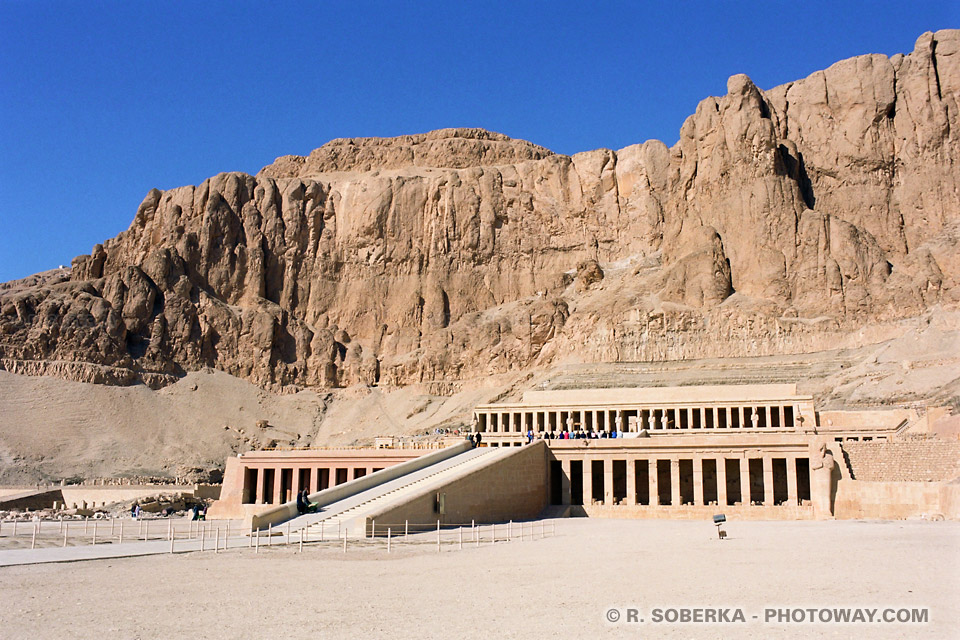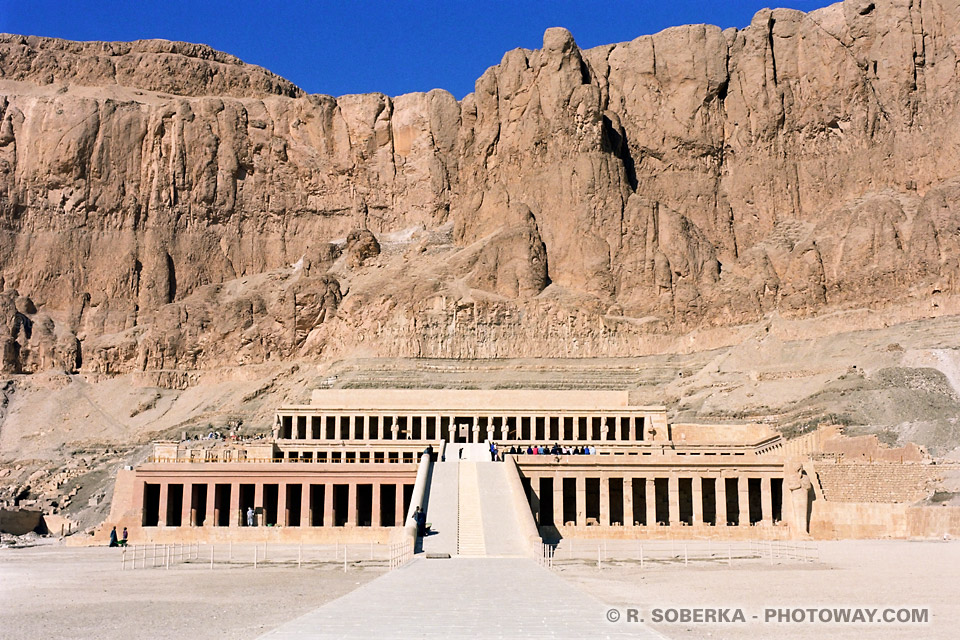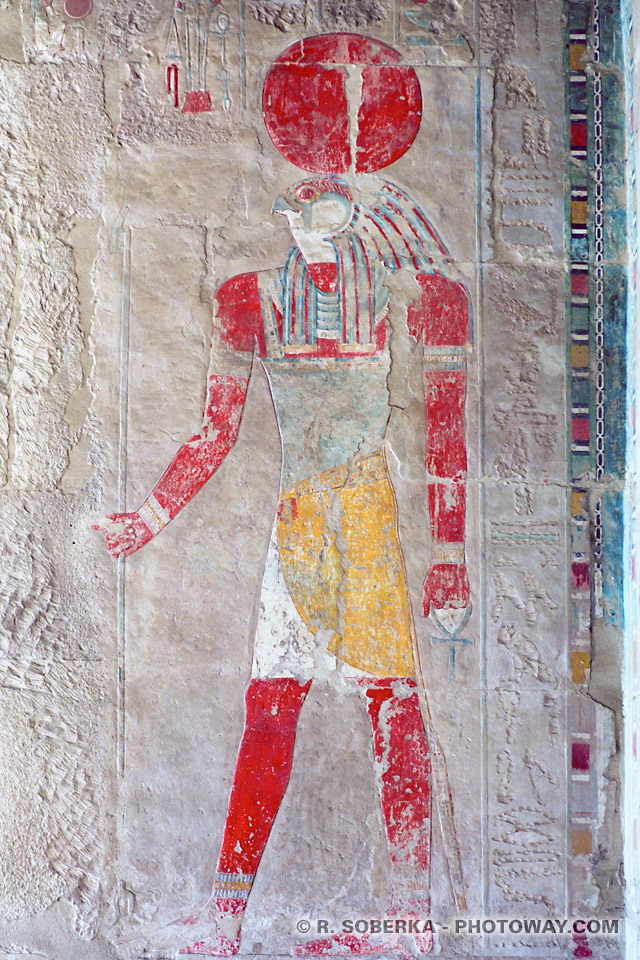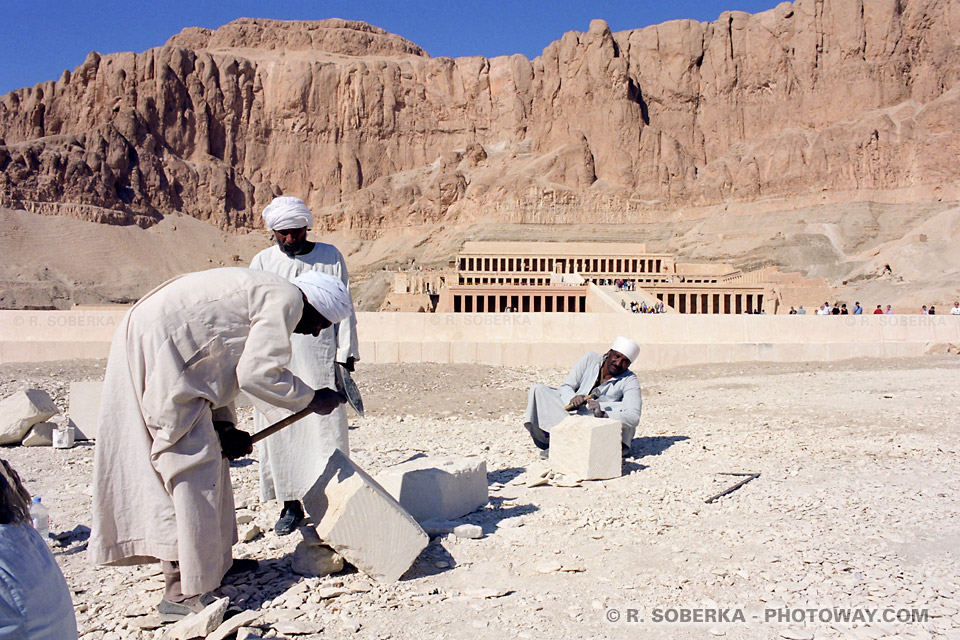MORTUARY TEMPLE OF HATSHEPSUT

Still within the Theban necropolis, a few kilometers from the Valley of the Kings, lies the mortuary temple of Queen Hatshepsut, a masterpiece of Egyptian architecture.
Nestled in the cliffs of Deir el-Bahari, this temple, built between 1479 and 1458 BCE, stands out for the elegance of its spectacular exterior design, despite the absence of interior galleries.

Hatshepsut, one of the few female pharaohs of ancient Egypt, ruled with a vision of prosperity and peace.
She expanded trade networks and commissioned grand monuments, leaving a lasting mark on Egyptian history.
Her mortuary temple, also known as Djeser-Djeseru, was designed and overseen by her chief architect, Senenmut.

On the walls of Queen Hatshepsut's temple, one can admire bas-reliefs with remarkably well-preserved colors.
Among them is a depiction of Ra-Horakhty, the solar deity, recognizable by his falcon head topped with the solar disk and the uraeus.
He holds the ankh, a powerful symbol of eternal life, making this artwork a remarkable piece of ancient Egyptian art.

During my visit in 2002, part of the temple was still being reconstructed by Egyptian craftsmen from the nearby village of Sheikh Abd el-Gournah, descendants of the ancient builders.
All photos of Mortuary Temple of Hatshepsut © 2002 by Richard Soberka